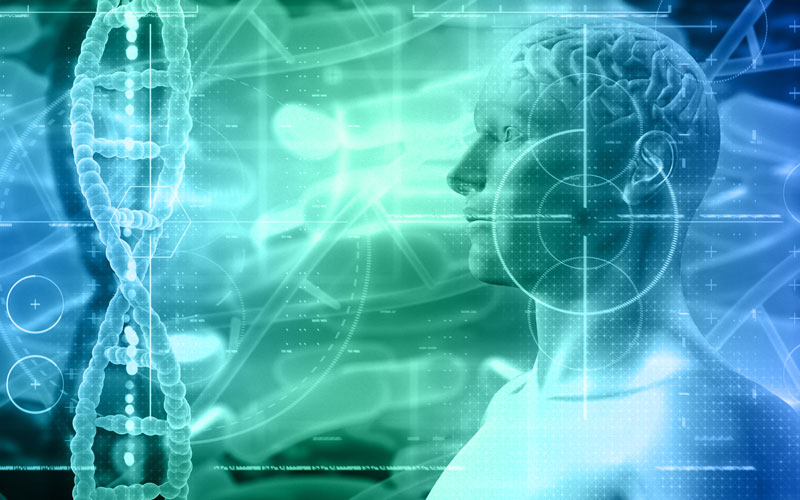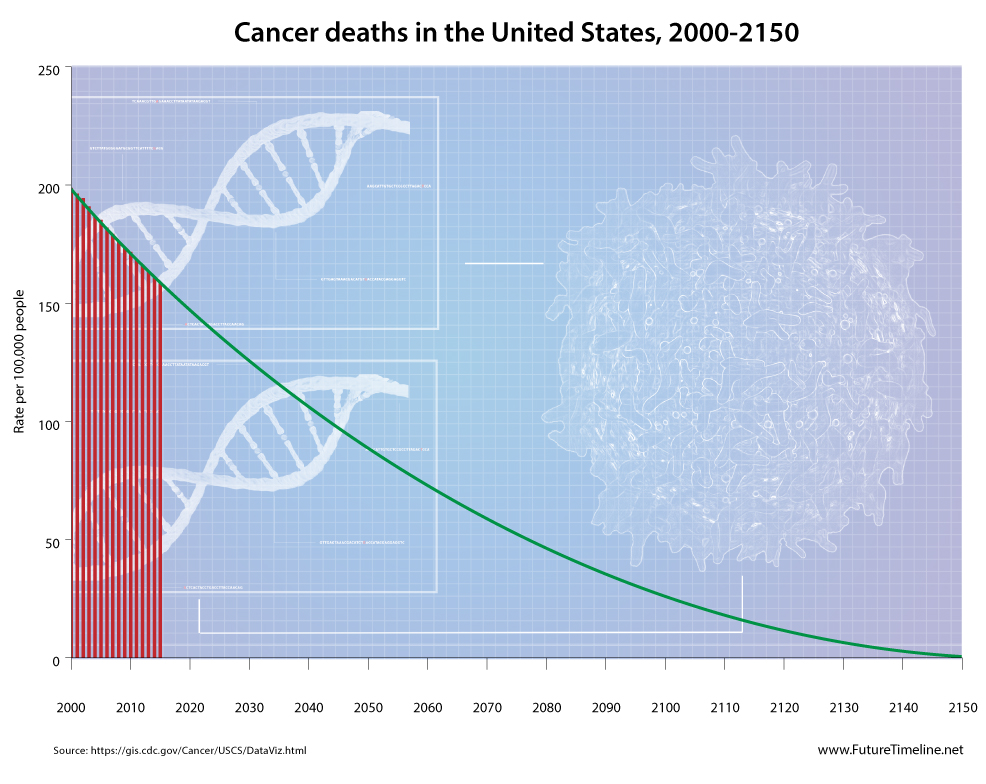
Cancer deaths in the United States, 2000-2150 When will cancer be cured? The graph below shows the declining number of deaths from cancer in the United States (rate per 100,000 people) from 2000 until the year 2150. The green trend line is extrapolated from the latest available data published by the Centers for Disease Control and Prevention (CDC). It can therefore be assumed that, in the United States at least, practically all cancer-related deaths will be eliminated by the mid-22nd century. However, this is simply based on the current rate of progress – ignoring disruptive factors that may emerge in the future. For example, health and medicine are now very much information technologies, which could follow a similar exponential path as computers have done for the last century. The growing use of AI and machine learning algorithms, with access to vast amounts of patient and laboratory data, is already providing researchers with tools that are orders of magnitude more powerful than those in past decades. The growth of personalised genomics is a related trend. The ability to quickly and cheaply sequence DNA has enormous potential, matching patients with the best and most specific treatments possible. This will greatly improve upon the "one size fits all" approach that is currently standard for drug therapies, which can have unintended side effects or may not work at all. Personalised genomics is just beginning to enter the mainstream, but is set to explode in coming decades and will ultimately make trial-and-error medicine a thing of the past. Alongside this, a further boost in efficacy could be achieved as mechanical devices become ever smaller. It will gradually become possible to target and perform surgery on parts of the body that were simply inaccessible before, even down to the level of individual cells. Nanoparticles and nanobots have already been demonstrated for more accurate drug delivery, while evading the body's immune system. In the future, more advanced nanorobotics could be fitted with tiny cameras, motors and wireless communications for still greater precision. These miniature machines, numbering in the millions, would serve as microscopic surgeons able to monitor and repair cells. Ultimately, with sufficient reduction in size, they could even go directly inside cells – including those within the brain – perhaps optimising the structure of components such as mitochondria and nuclei. Another technology, likely to see widespread adoption in the coming decades, is the use of highly sophisticated computer simulations able to automate "virtual" clinical trials, performing the equivalent of years' worth of research in a matter of hours or minutes. Various other breakthroughs hold the promise of new and improved cancer treatments – 3-D printing of tissues and organs, immunotherapy to replace chemotherapy, senolytics to remove zombie cells; the list goes on.
Then again, there is still a tremendous amount that we do not know about the human body. It is possible that we may never know everything. We should not underestimate the awesome power of nature and the billions of years of evolution it took for our physical forms to emerge on this planet. The sheer complexity of relationships between genes, proteins and chemical reactions might prove too challenging – even with state-of-the-art supercomputers and software algorithms – at least in the near future. More than 200 types of cancer are now known to exist, with many rare subtypes. Some cancers, such as pancreatic and lung cancer, today have extremely low survival rates, with glacial progress in terms of new treatments. Other factors may affect the outlook for cancer survival during the 21st century. A rapid rise in obesity has been predicted and this condition is associated with an increased risk of breast, colorectal, endometrial, oesophageal, gallbladder, kidney, pancreatic and thyroid cancer. The prevalence of obesity in the United States is forecast to increase from 39% to 55% by 2045. Ongoing pollution of our atmosphere, land and water is likely to have serious long-term consequences. This includes the now alarming quantity of plastics entering food chains, containing highly toxic carcinogens and chemicals, which can ultimately end up in our bodies. There may be other, as yet unknown factors, which could further slow or even reverse the trend in cancer survival rates. A breakdown of society – due to war, climate change, financial collapse or other disasters – also cannot be ruled out. So it is rather difficult to say when cancer, as a whole, will be "cured". We leave this graph open to readers' interpretations. The current trend is promising, however, and clearly heading in the right direction.
Source: United States Cancer Statistics: Data Visualizations, Centers for Disease Control and Prevention:
Posted: 11th November 2018. Last updated: 11th November 2018.
If you enjoy our content, please consider sharing it:
|








